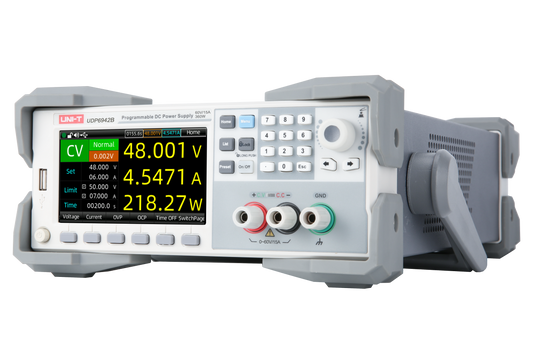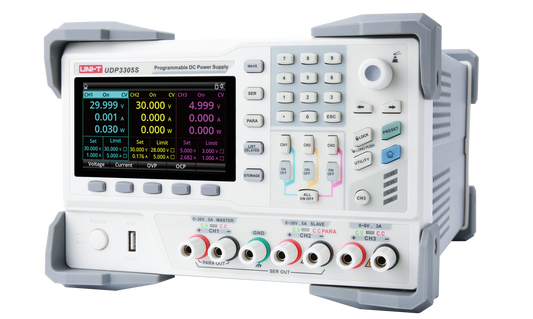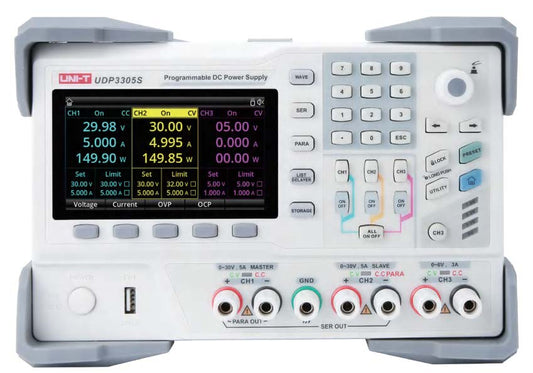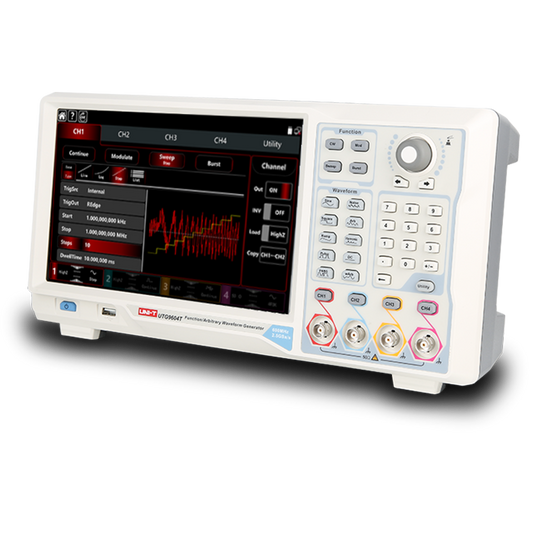Enhancing Electrical Circuit Design with Uni-Trend DC Power Supplies
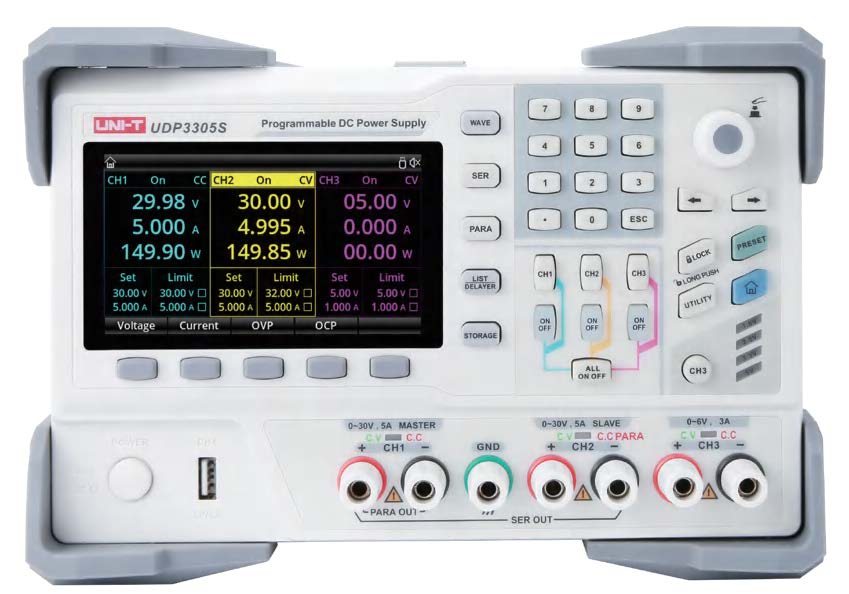
In the realm of electrical circuit design, precision and reliability are paramount. For engineers and students alike, the tools they use can significantly impact the quality of their work and the efficiency of their experimentation. One such indispensable tool is a DC power supply. Among the myriad options available, Uni-Trend DC power supplies stand out for their robust features and exceptional performance. This article delves into the benefits and applications of using a Uni-Trend DC power supply in an electrical circuit design lab, highlighting how it can enhance experimentation, provide accurate voltage control, and support various circuit design projects.
What is the difference between Linear and Switch mode power supplies?
Linear and switch-mode DC power supplies are two distinct types of power sources used in various applications. Linear power supplies operate by using a transformer to step down the AC voltage, which is then rectified and filtered to produce a stable DC output. They are known for their low noise and excellent regulation but tend to be larger, heavier, and less efficient due to continuous energy dissipation as heat. Switch-mode power supplies (SMPS), on the other hand, convert AC to DC using high-frequency switching transistors and then filter the output to the desired voltage. SMPS are highly efficient, lightweight, and compact but can generate more electrical noise and are more complex. Linear power supplies are ideal for sensitive analog applications, audio equipment, and lab testing where low noise is crucial. Switch-mode power supplies are preferred in high-power applications, consumer electronics, and situations where efficiency and space-saving are priorities.
Key Benefits of Uni-Trend DC Power Supplies
Precision and Accuracy
Uni-Trend Technology DC power supplies are renowned for precise voltage and current output. This precision is crucial in circuit design, where even minor fluctuations can lead to significant discrepancies in results. With fine voltage control down to millivolt levels and current control to microampere levels, Uni-Trend ensures that the power supplied to your circuits are stable and accurate. This level of control is particularly beneficial for sensitive electronic components and complex circuit designs.
Versatility
Uni-Trend offers a range of DC power supplies that cater to different needs, from low-power applications to high-power demands. Whether you are working on a small-scale project or a large, intricate circuit, there is a Uni-Trend model that fits your requirements. Models such as the UDP3305S Programmable Linear DC Power Supply, provides four channel outputs, enabling series and parallel testing of multiple circuits, which is a significant time-saver in a busy lab environment.
Reliability and Safety
Safety is a critical consideration in any lab setting. Uni-Trend DC power supplies are designed with multiple safety features, including overvoltage protection (OVP), overcurrent protection (OCP), and over-temperature protection (OTP). These features protect both the user and the equipment, ensuring that experiments can be conducted without the risk of damaging sensitive components or causing hazardous situations.

Technical Specifications
To understand the capabilities of Uni-Trend DC power supplies, let’s look at the specifications of a popular model, the UDP3305S Programmable Linear DC Power Supply:
- Output Voltage: 0-30V
- Output Current: 0-5A
- Line Regulation: CV ≤ 0.01% + 3mV, CC ≤ 0.2% + 3mA
- Load Regulation: CV ≤ 0.01% + 2mV, CC ≤ 0.2% + 3mA
- Ripple & Noise: ≤ 1mVrms
- Display: 4.3-digit LED for both voltage and current
- Weight: 10.2kg
- Dimensions: 365 x 240 x 168 mm
These specifications highlight the power supply’s ability to deliver stable and clean power, essential for high-precision tasks.
Real-Life Applications
Educational Labs
In educational settings, where students are learning the fundamentals of circuit design, the Uni-Trend DC power supply provides a user-friendly interface with high reliability. Students can focus on understanding circuit behavior without worrying about power inconsistencies. For instance, a common lab experiment involves studying the I-V characteristics of diodes and transistors. With the precise control offered by Uni-Trend, students can obtain accurate readings, leading to better learning outcomes.
Research and Development
For professionals in research and development, the Uni-Trend DC power supply’s advanced features facilitate experimentation with new circuit designs and prototypes. Consider a scenario where a researcher is developing a low-noise amplifier. The low ripple and noise specifications of the Uni-Trend power supply ensure that the power source does not introduce additional noise, allowing for a more accurate assessment of the amplifier's performance.
Industrial Testing
In an industrial context, where rigorous testing and quality assurance are crucial, Uni-Trend DC power supplies support extensive testing of electronic components and systems. For example, in the production of power-sensitive devices like mobile phones or medical equipment, ensuring consistent power during testing can prevent potential defects and ensure high product reliability.
Practical Tips for Using Uni-Trend DC Power Supplies
- Understand Your Requirements: Before selecting a power supply, evaluate the voltage and current requirements of your projects to choose a model that best fits your needs.
- Regular Calibration: Ensure the power supply is regularly calibrated to maintain its precision. Calibration should be done according to the manufacturer’s recommendations.
- Use Safety Features: Make full use of the built-in safety features like OVP, OCP, and OTP to protect your circuits and devices. These features can prevent costly damages and ensure safe operation.
- Documentation and Labeling: Keep detailed records of the settings used for different experiments. Label your power supply outputs clearly to avoid confusion, especially in a shared lab environment.
- Maintenance: Regularly inspect the power supply for any signs of wear or damage. Ensure that the ventilation is unobstructed and clean to prevent overheating.
Conclusion
Uni-Trend DC power supplies are a vital tool in the arsenal of electrical engineers and students. Its precision, versatility, and reliability make them an excellent choice for a wide range of applications, from educational labs to industrial testing environments. By leveraging the advanced features and robust design of Uni-Trend DC power supplies, users can enhance their experimentation, achieve accurate voltage control, and support diverse circuit design projects effectively. Whether you are a student delving into the basics of electronics or a professional pushing the boundaries of innovation, Uni-Trend provides the power and precision you need to succeed.
For more information on the Uni-Trend line of DC Power Supplies, visit https://uni-trendus.com/collections/dc-power-supplies
For all your test bench needs, visit Uni-TrendUS.com



